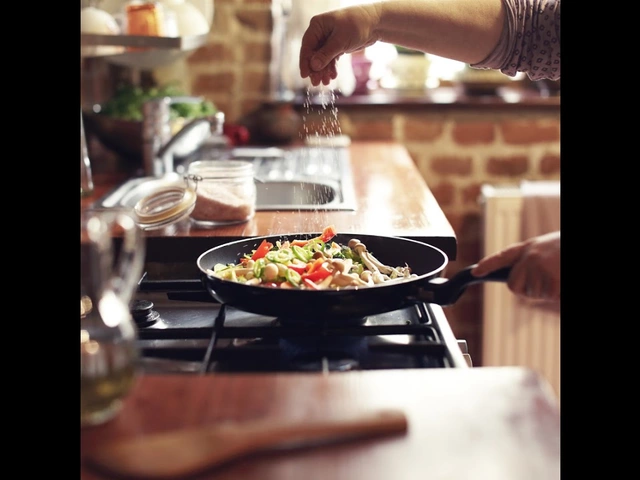All the recipes I find for coq au vin use chicken legs and thighs?

Coq au vin is a classic French dish of chicken braised in red wine, typically with mushrooms, onions, and bacon. Traditionally, the dish is made with chicken legs and thighs, which are slow-cooked to tender perfection. But what if you’re looking for a lighter variation? Using chicken breasts instead of dark meat can be a delicious and healthier way to enjoy coq au vin.
Here are a few tips for making a delicious and flavorful coq au vin with chicken breasts:
- Use bone-in chicken breasts. Bone-in chicken breasts provide more flavor than boneless breasts and will stay juicy and tender as they cook in the wine. The bones also provide extra flavor to the sauce.
- Sear the chicken breasts. Before adding the chicken to the sauce, sear it in a hot pan with a bit of oil until both sides are golden-brown. This will help to seal in the juices and add a nice, caramelized flavor.
- Reduce the cooking time. Since chicken breasts are much leaner than legs and thighs, they don’t need to cook as long to be tender. Leave the chicken in the sauce for about 30 minutes, or until it’s cooked through and tender.
- Add extra flavor. To make sure your coq au vin with chicken breasts is as flavorful as the classic version, add a few extra ingredients to the sauce. Consider adding garlic, herbs, and a few strips of bacon for extra flavor.
Using chicken breasts instead of legs and thighs in coq au vin is a great way to lighten up the classic dish. Just remember to sear the chicken before adding it to the sauce, reduce the cooking time, and add a few extra ingredients for extra flavor. Bon appétit!
Coq au vin is a classic French dish that has been enjoyed for centuries. The name literally translates to “rooster in wine,” and the dish is traditionally made with a rooster that has been braised in wine. Today, however, most recipes for coq au vin call for chicken legs and thighs instead of a whole rooster.
So, what makes coq au vin so special? The flavor profile of this dish is complex and unique, and it’s this complexity that makes it so popular. The combination of the chicken and the wine creates a rich, deep flavor that is both savory and sweet. The addition of herbs such as thyme, bay leaves, and parsley further enhance the flavor of the dish.
The cooking process is also important in creating the flavor profile of coq au vin. The chicken is typically browned in a hot pan before it is braised in the wine, which adds an additional layer of flavor to the dish. The slow braising process also helps to tenderize the chicken, creating a succulent and flavorful finished product.
Finally, the type of wine used to make coq au vin is also important in creating the dish’s unique flavor. Many recipes call for a dry red wine, such as Burgundy or Pinot Noir, but white wines can also be used. The wine adds a subtle sweetness to the dish that helps to balance the savory flavors of the chicken and herbs.
So, why do all the recipes for coq au vin call for chicken legs and thighs? Well, the flavor profile of the dish is built around the combination of the chicken and the wine, and the legs and thighs are the perfect size and shape for braising in the wine. They also tend to be more tender than other cuts of chicken, which helps to create a rich and flavorful finished product.
When it comes to classic French dishes, coq au vin is one of the most recognizable. While some recipes may vary, one common ingredient found in all versions of this dish is chicken legs and thighs. But why is this the case?
Chicken legs and thighs are chosen for coq au vin for a few reasons. First, these parts of the bird have the most flavor, which is important for a dish that relies heavily on the sauce. Additionally, chicken legs and thighs are tough enough to hold up to the long cooking time. The fat and collagen in the skin of the legs and thighs also help to thicken the sauce, making it even more flavorful.
For a perfect coq au vin, it’s important to use the right type of chicken. Organic or free-range chickens are best, since they’ll be more flavorful and tender. Be sure to look for chicken thighs and legs with the skin still on, which will help to add flavor to the dish. Once you’ve got the right kind of chicken, it’s time to get cooking!
Follow your recipe carefully, and pay attention to the cooking times. The chicken should be cooked slowly, so that it has time to develop flavor and become tender. Be sure to monitor the heat carefully and stir the sauce often, so that it doesn’t stick to the bottom of the pan. If you’re following a traditional recipe, there will be a time for adding the wine to the dish. This is an important step, as the wine helps to add depth of flavor and balance the richness of the sauce.
With a few tips and tricks, you can create a perfect coq au vin every time. Aside from using chicken legs and thighs, be sure to use the right type of chicken, pay attention to the cooking times, and add the wine when indicated. With a bit of practice, you’ll be able to make this classic dish with ease!
Coq au vin is a classic French dish that has been enjoyed for centuries. It is a hearty, savory stew made with chicken, mushrooms, onions, bacon, and red wine. The dish is typically served over egg noodles, mashed potatoes, or rice. But the question remains: Where did this delicious dish come from?
The origin of coq au vin has been debated for years. Some believe the dish dates back to the Roman Empire, while others believe it originated in the Middle Ages. One thing is certain: The dish is rooted in French tradition. It is believed that the earliest versions of coq au vin were made with rooster meat. The rooster was a symbol of power and strength, and the dish was thought to bring these same qualities to the table. As time passed, chicken replaced the rooster, and the dish evolved into the classic we know today.
Interestingly, most recipes for coq au vin today call for chicken legs and thighs. But why? It turns out that the dark meat from the legs and thighs is more flavorful and tender than white meat. The dark meat also stands up better to long cooking times, making it the perfect choice for a slow-cooked stew such as coq au vin. So while the traditional recipe may not call for it, feel free to use white meat if you prefer.




